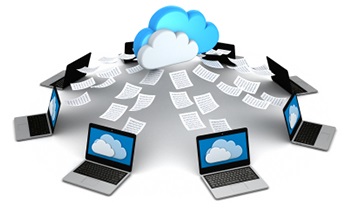Harden Employees Against Ransomware With KnowBe4

Are you curious to see who in your company is most likely to download a virus on your network? Well now you can find out and the best part is, its free. With KnowBe4 you can administer a range of free tools that will allow you to see which of your users is most likely fall for phishing […]
Data Backup Verification Audit
You’ve likely heard more than enough times that you need to backup your data. This is what every software vendor and IT partner will preach to you from day one. They’re right, of course, but there could still be potential problems. How do you really know that you have backups? You may have a backup […]
How to use Relative and Absolute Cell References in Microsoft Excel 2016
When working with a Microsoft Excel 2016 data table you may find that it is useful to define a constant outside of the data table rather than repeating it in every cell. Suppose you are trying to apply three different tax rates to a data table and you need to be able to adjust those […]
How to prepare for ransomware
Lately, there has been a lot of talk about ransomware: a type of computer virus that encrypts your files and holds them for ransom. Worse yet, there is no guarantee that your data will be released if you pay the ransom fee. In light of the most recent ransomware attack called “WannaCry” that infected a substantial number of […]
Protect Your Company From “Arrive By Date” Fines
Have you ever had to face a fine for late delivery of products or services to major retailers? Recently we had the opportunity to work with a new client that had this unique issue. Due to network downtime, the company wasn’t able to make shipments on time. As a supplier of textile products to a major […]
Redundant IT Support
Have you been in a position where your IT network is down and support is nowhere to be found. At this point you are probably scrambling to find anyone who can help bring your network online. This problem usually occurs when your support company consists of one person and they decide to go on vacation […]
The Growing Importance of Business Internet
Sooner rather then later, business IT networks will consist of an internet connection and a light weight computer that acts as a terminal to the internet. There will be no more investing in servers, switches, battery backups, NAS devices etc. in the same way that has been done for the last 15 years. Companies will […]
How Many Forms Of Redundancy Should Your Data Backup Plan Have?
How do you know when your data is secure? In business today, almost everyone knows that backups are an absolute necessity, but there are no clear standards that helps you know your data is safe. It seems like there are new appliances and cloud services being created every day that are going to solve all […]





